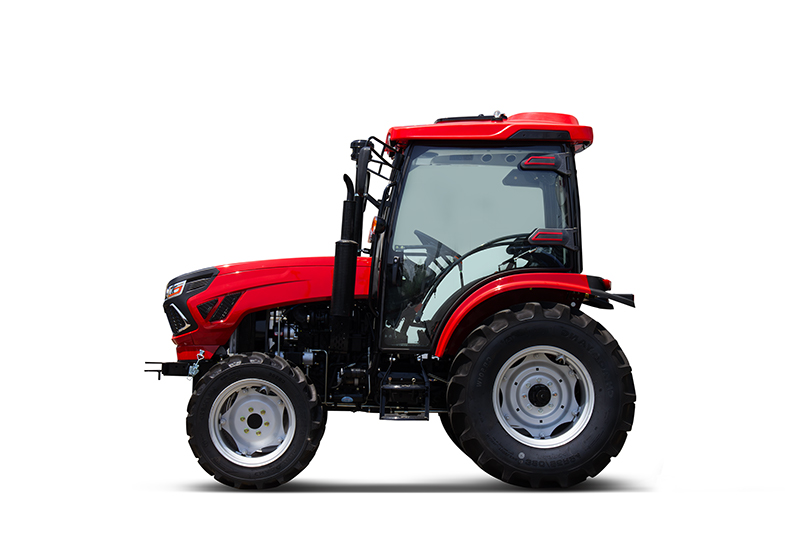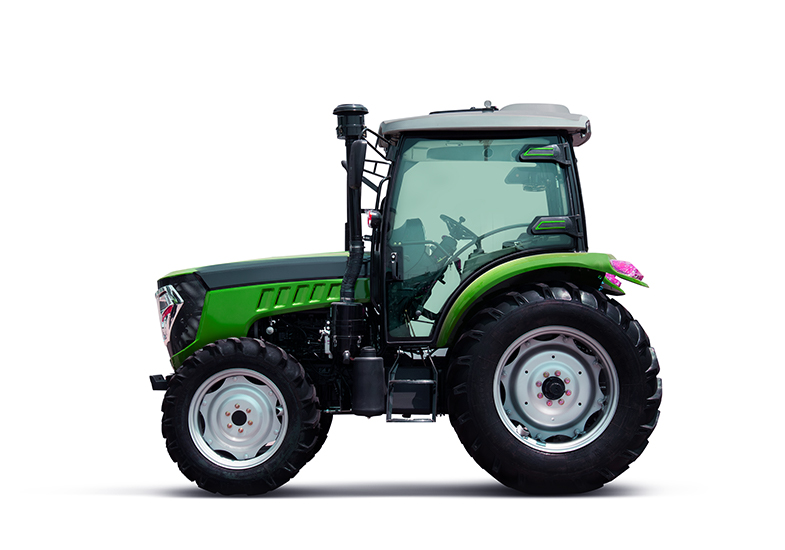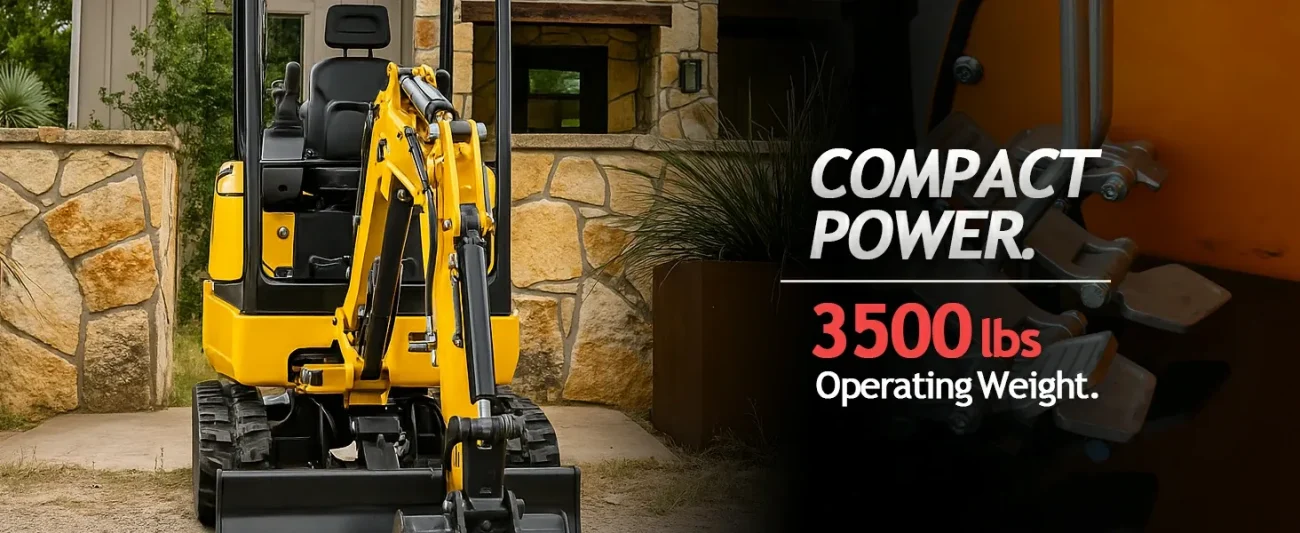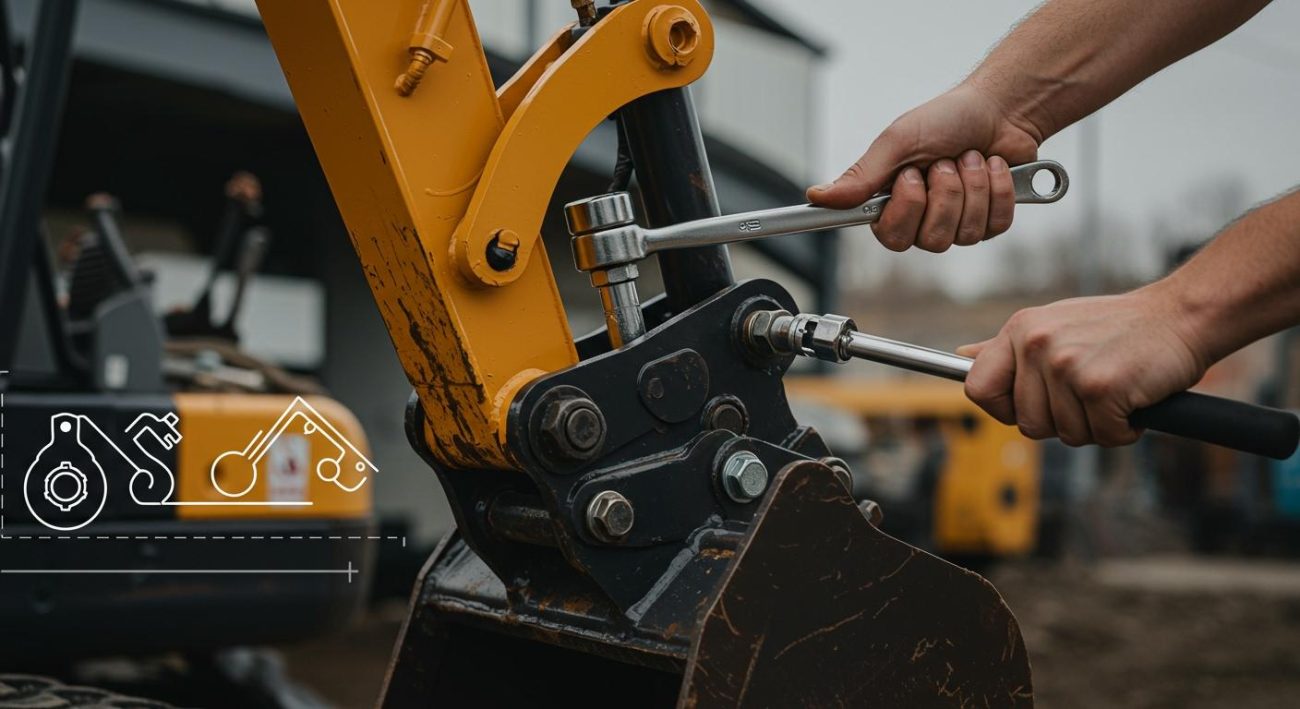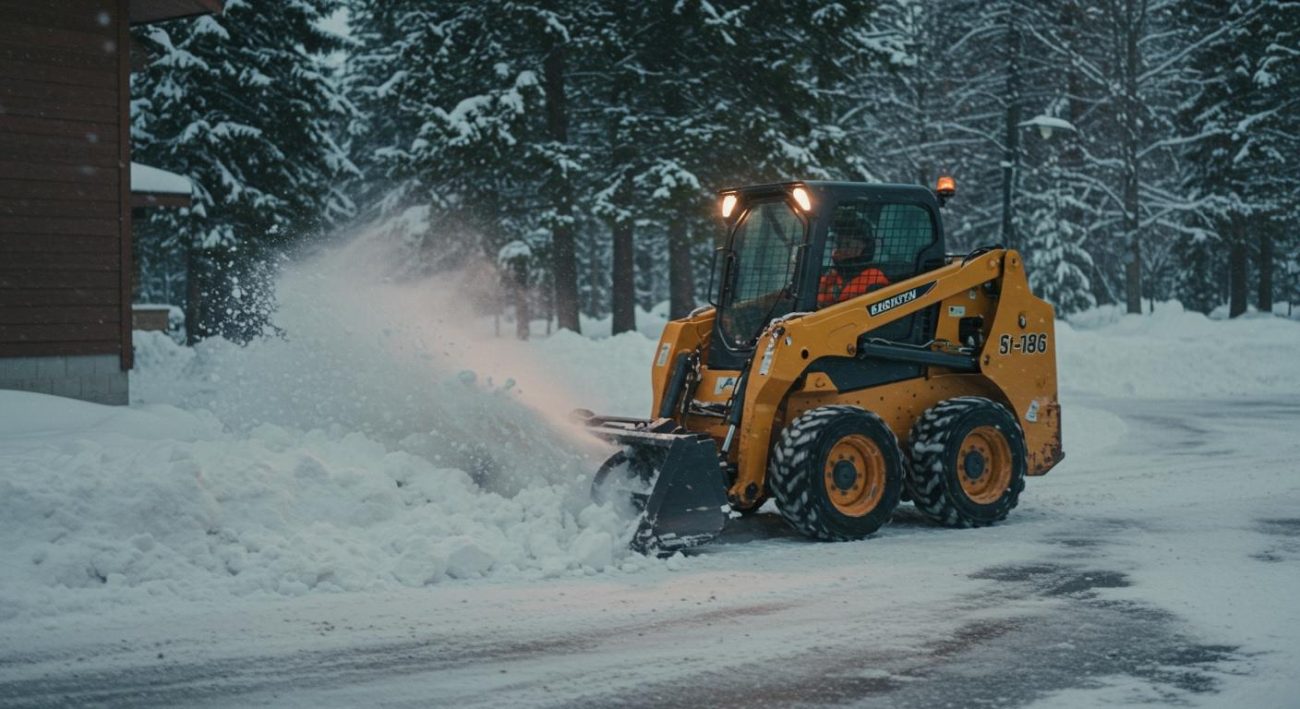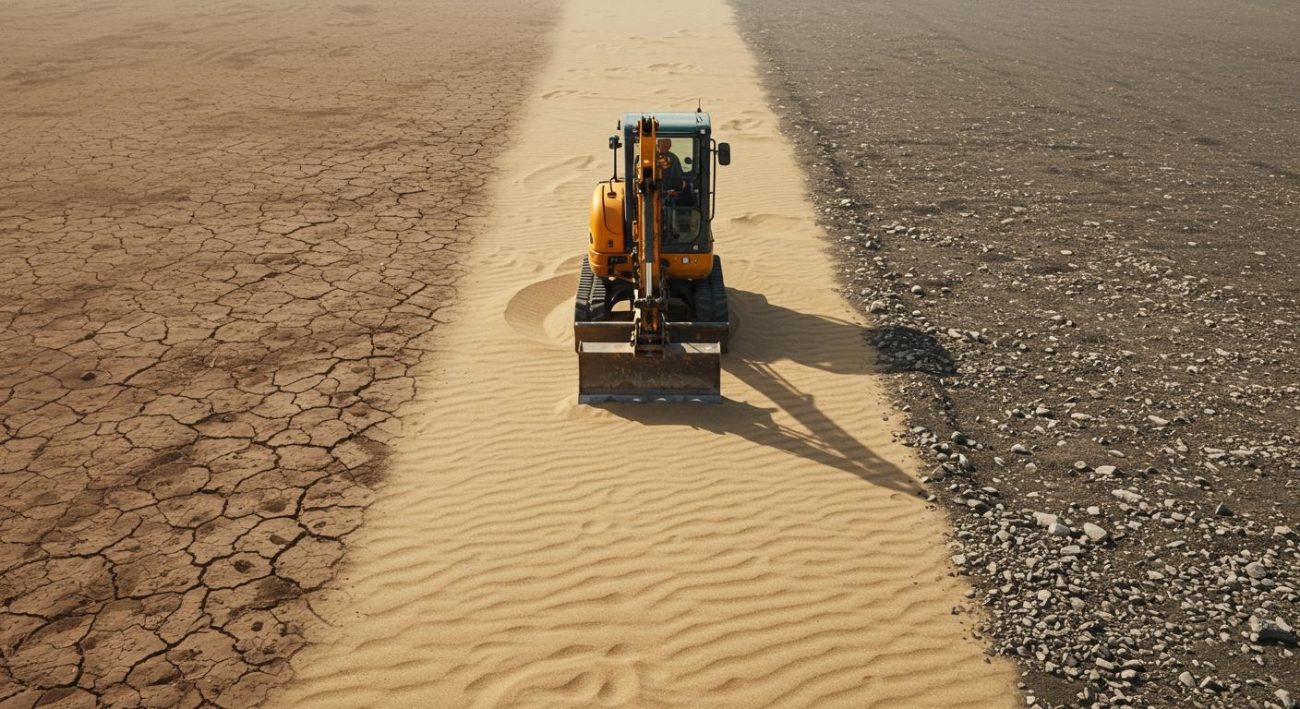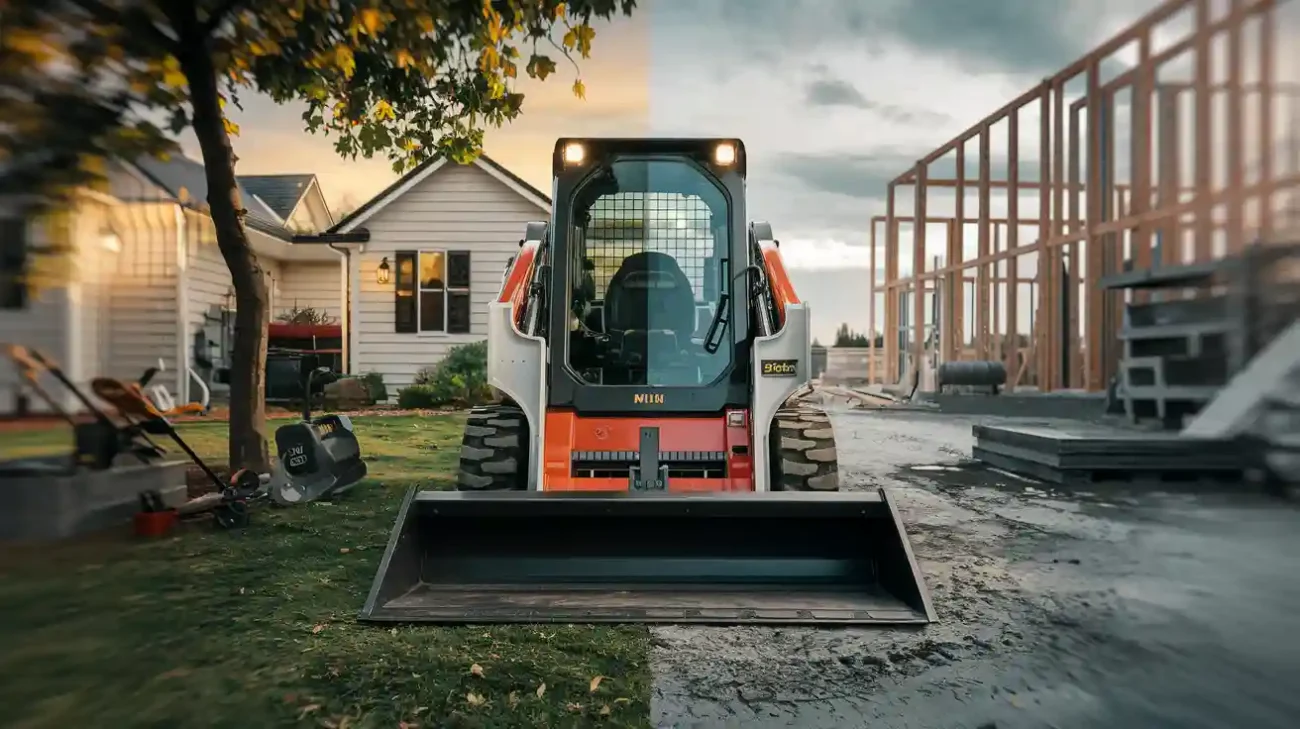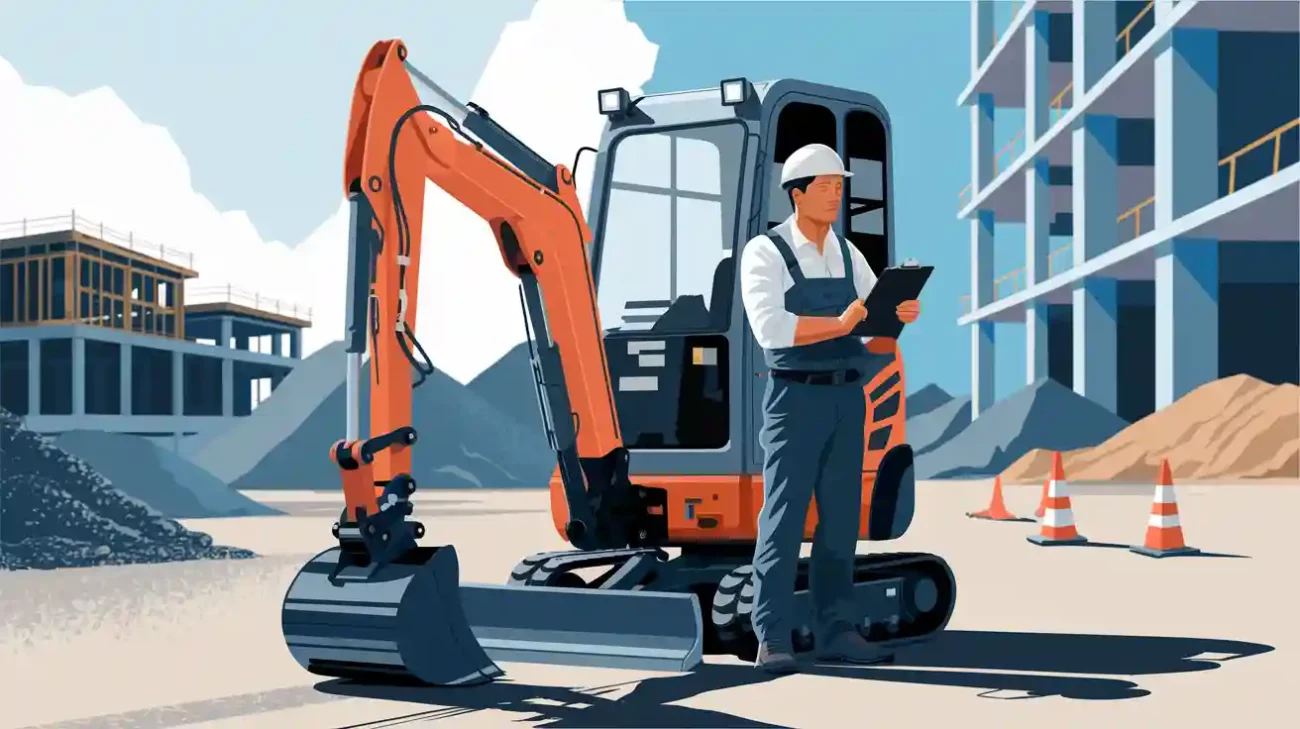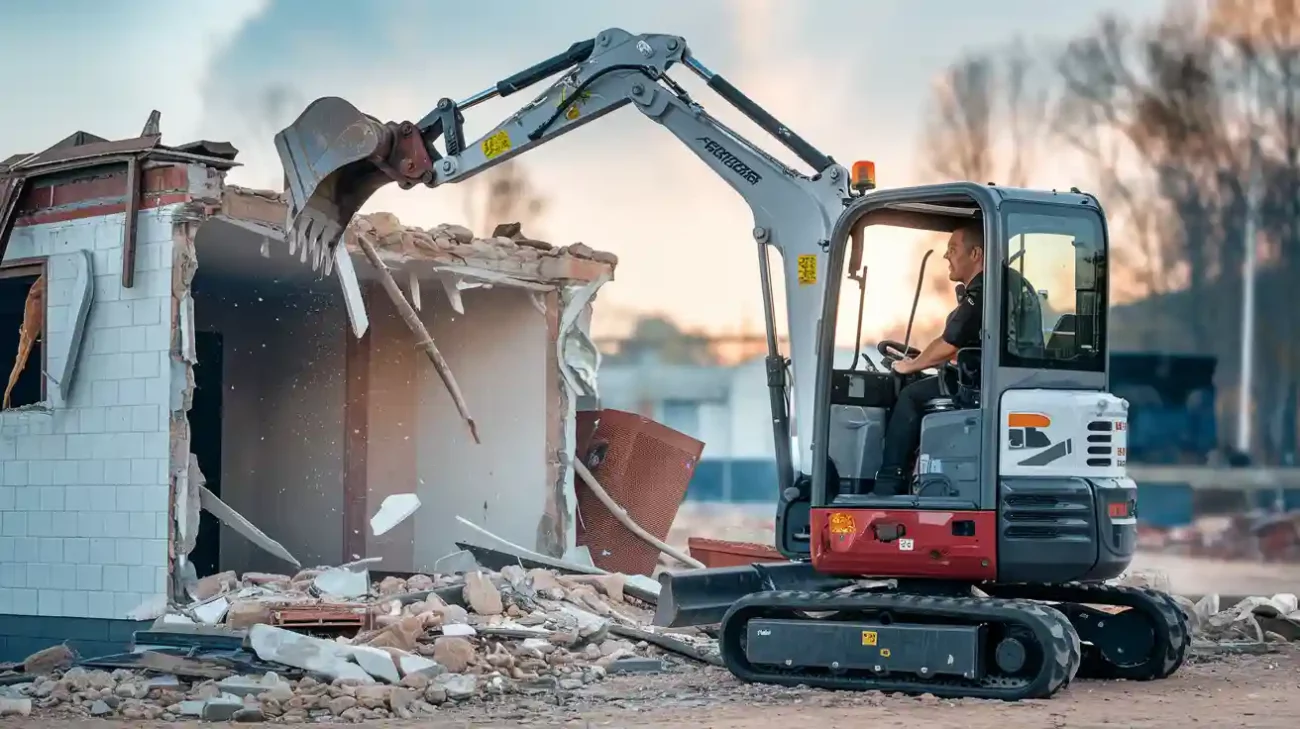If you want good results for cleaning farm ditches, a mini excavator is often the best choice. It has better reach and digging power. This helps you clean hard spots and keep ditches open. Choosing the right compact farm equipment is important. You face real problems every season. Here are some common problems:
Challenge | Description |
|---|---|
Stops crop sickness and bad harvests. This is very important for farming. | |
Accessibility in challenging terrains | Makes sure equipment can get to hard places. This is needed to keep ditches clean. |
Cost-effectiveness | One machine can do many jobs. This means you do not need lots of machines. |
DeepKron gives you good choices. But always look at your land and what you need before picking.
Key Takeaways
Mini excavators are usually the best for cleaning farm ditches. They have strong digging power and can reach far. – Think about what your project needs. Mini excavators are great for digging deep. Skid steers are better for moving stuff fast in small areas. – Pick the right equipment for your ditch size and soil type. This helps you avoid problems and keeps things working well. – Both machines need regular care. Check your equipment before you use it to keep it working right. – DeepKron gives farmers good compact farm equipment and strong support. Many farmers trust this brand.
Direct Comparison
Main Recommendation
When you look at farm ditch cleaning, you want a machine that makes your job easier and faster. Most of the time, a mini excavator gives you the best results. You get more reach and digging power. This means you can clear out deep ditches and remove tough debris without much trouble. Mini excavators also let you work from the edge of the ditch, so you do not have to drive into muddy or soft ground. That keeps your machine safe and your field in good shape.
Skid steers still have a place on the farm. If you need to work in tight spaces or move material quickly, a skid steer can help. You can use different attachments to scoop, push, or lift. But for deep cleaning and shaping ditches, you will find a mini excavator does the job better.
Tip: Always match your machine to the size of your ditch and the type of soil. This helps you avoid problems and keeps your work smooth.
Key Factors
You have a lot to think about before you choose between a skid steer and a mini excavator. Here are the main things you should consider:
Project Requirements: Think about what you need to do. If you need to dig deep or reach far, a mini excavator works best. If you need to move dirt or clear brush in a small area, a skid steer might be enough.
Versatility: Both machines can use many attachments. This means you can do more than just clean ditches. You can grade, lift, or even mow with the right tools.
Functionality: Mini excavators give you strong digging power and reach. Skid steers give you speed and easy handling in small spaces.
Size and Maneuverability: Skid steers fit into tight spots and turn quickly. Mini excavators need more room but can handle bigger jobs.
Power and Performance: Mini excavators handle heavy-duty work. They dig deeper and lift more. Skid steers work well for lighter jobs and quick cleanups.
Cost Considerations: Skid steers often cost less for small projects. Mini excavators may cost more, but they save time on big jobs.
Factor | Skid Steer Strengths | Mini Excavator Strengths |
|---|---|---|
Tight Spaces | Excellent | Good |
Digging Depth | Limited | Superior |
Material Handling | Fast | Precise |
Terrain Handling | Good traction on soft ground | Handles uneven, rough terrain |
Attachment Options | Wide variety | Wide variety |
Cost for Small Jobs | Lower | Higher |
You also need to think about the land. If your ditches run through muddy or uneven ground, a skid steer gives you steady traction and keeps ground damage low. Mini excavators work better in open areas or where you need to dig deep. Always check the soil and space before you start.
Safety matters, too. You should always:
Use the right size and type of attachment.
Read the manual before you start.
Know what your machine can and cannot do.
Inspect your equipment before each use.
Keep up with regular maintenance.
Drive at a safe speed.
Turn slowly and carefully.
Never overload your machine.
Slow down on rough ground.
Learn and follow all safety rules.
When you use compact farm equipment, you get more control and better results. Take your time to match the machine to your needs, and you will keep your ditches clean and your farm running smoothly.
Machine Overview
Skid Steer Features
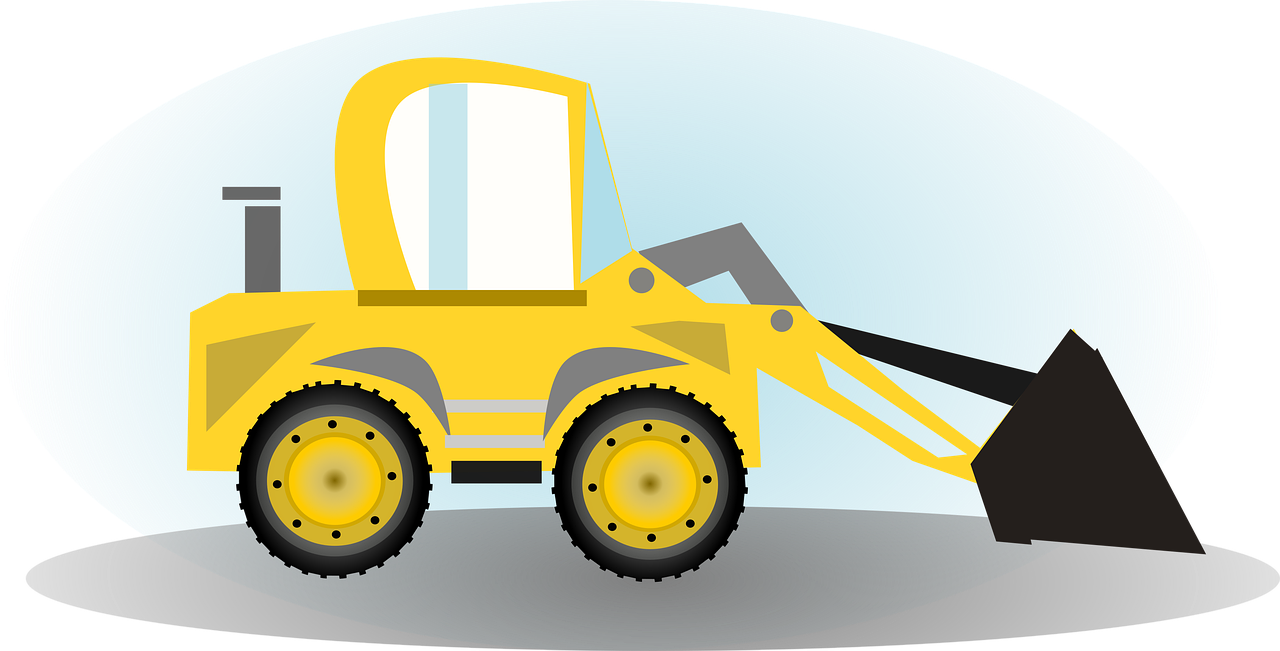
When you look at a skid steer, you see a machine built for speed and flexibility. You can turn it almost on the spot, which helps you work in tight areas. Skid steers use wheels, so you get good traction on firm ground. You can also swap out attachments fast. This means you can scoop, push, or lift with just one machine.
You might wonder about engine power. Skid steers come in different sizes. Here’s a quick look at what you can expect:
Frame Size | Weight Range | Horsepower Range |
|---|---|---|
Small frame | Under 1,750 lbs | Under 50 hp |
Medium frame | 1,750 to 2,200 lbs | 50 – 70 hp |
Large frame | Over 2,200 lbs | Over 70 hp |
If you have a small ditch or need to zip around the farm, a small or medium skid steer works well. For bigger jobs, a large frame gives you more power. You can use a bucket to move dirt or a brush cutter to clear weeds. Skid steers handle a lot of jobs, so you get more done with less effort.
Tip: Skid steers shine when you need to move material quickly or work in a crowded space.
Mini Excavator Features
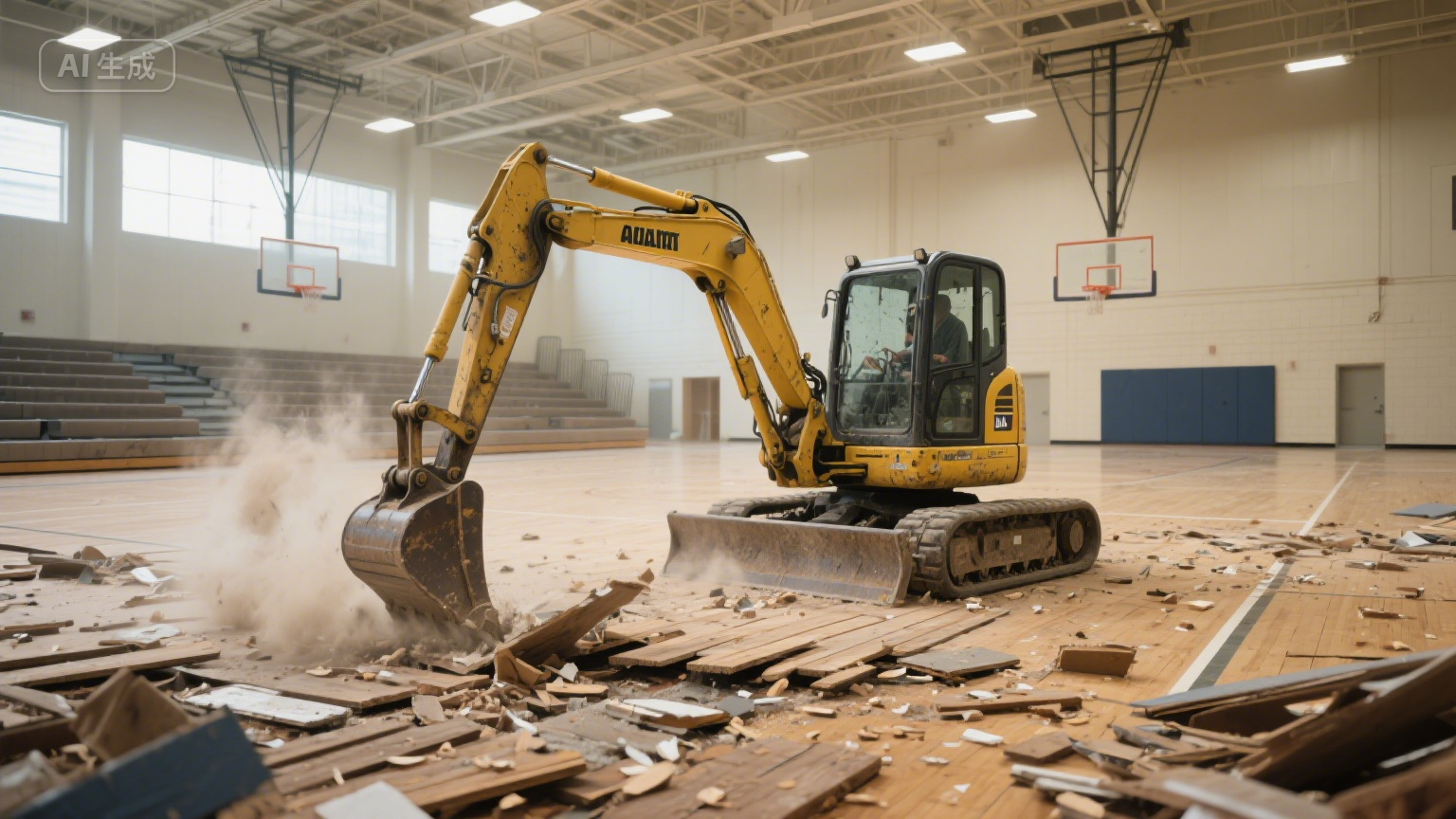
Mini excavators give you strong digging power and reach. You can swing the arm to dig deep or reach across a ditch. The tracks help you move over soft or uneven ground without getting stuck. You sit in a cab that keeps you safe and comfortable.
You can use different attachments, like a digging bucket or a grading blade. This lets you shape ditches or remove tough roots. Mini excavators work best when you need to dig deep or reach far. You can stay on the edge of the ditch and still get the job done.
Many farmers like mini excavators because they do not damage the ground as much. You can work in wet or muddy spots without making a mess. If you want clean, deep ditches, a mini excavator makes the job easier.
Note: Mini excavators help you tackle tough ditch cleaning jobs with less effort and more control.
DeepKron Compact Farm Equipment
When you look for compact farm equipment, you want machines that work hard and last long. DeepKron gives you choices that fit your farm and your ditch cleaning needs. You get mini excavators and skid steers that handle tough jobs and make your work easier. DeepKron builds each machine with care. You see strong frames, smart designs, and features that help you get more done.
DeepKron stands out because it listens to farmers. You get equipment that solves real problems. The company uses new ideas and strong materials. You also get support when you need it. DeepKron wants you to feel confident every time you start a job.
DeepKron Skid Steers
You have several options when you pick a DeepKron skid steer for ditch cleaning. Each model gives you something special:
DK300: This model fits small spaces. It lifts up to 551 pounds. You use it for light cleanup and tight spots.
DK500: You get more power and size. It lifts 881 pounds. Many farmers choose this for bigger ditches and tougher jobs.
DK700: This is the strongest model. It lifts 1,719 pounds. You use it for heavy-duty cleanup on large farms.
You can switch attachments fast. You scoop, push, or lift with one machine. DeepKron skid steers help you move material quickly and keep your ditches clear.
DeepKron Mini Excavators
If you need to dig deep or reach far, DeepKron mini excavators give you the power and control you want. You get strong arms and smooth tracks. You can work on soft ground or uneven terrain. The cab keeps you safe and comfortable. You can add buckets, blades, or other tools to match your job.
DeepKron mini excavators help you shape ditches and remove tough debris. You get clean results without damaging your field. These machines make ditch cleaning simple and fast.
Tip: DeepKron offers a warranty for compact farm equipment. You get 12 months or 1,000 hours of coverage for design, making, or materials issues. Just follow the care schedule to keep your warranty active.
Warranty Duration | Coverage | Conditions |
|---|---|---|
12 months or 1,000 hours | Design, making, or materials issues | Care schedule must be followed |
You get peace of mind with DeepKron. The company stands behind its compact farm equipment and helps you keep your farm running strong.
Maneuverability
Skid Steer Handling
You want a machine that feels easy to control. Skid steers give you that feeling. You can turn a skid steer almost in place. The wheels let you zip around tight corners and small spaces. If you have ditches close to fences or buildings, you can get right up next to them without trouble.
You sit high in the cab. You see everything around you. The controls respond quickly. You push a lever, and the machine moves. You twist the steering, and the skid steer spins. You can back up, turn, and move forward in seconds. This helps you clean ditches fast, especially when you need to change direction often.
Skid steers work best on firm ground. The tires grip well, so you do not slide. If you hit a muddy patch, you can still keep moving, but you might need to slow down. You can use attachments like buckets or sweepers. You switch them out in minutes. This means you spend less time setting up and more time working.
Tip: If you have lots of obstacles or narrow paths, a skid steer saves you time. You get in and out quickly.
Mini Excavator Handling
Mini excavators move differently. You drive on tracks, not wheels. The tracks spread out the weight. You do not sink into soft ground. You can cross muddy fields or uneven terrain without getting stuck. The machine feels stable, even when you work near a ditch edge.
You control the arm with joysticks. You reach out, dig, and swing the bucket. You do not need to move the whole machine every time. You sit in a cab that protects you from weather and debris. You see the ditch clearly. You can work from one spot and reach across the ditch.
Mini excavators turn slowly compared to skid steers. You pivot the tracks, and the machine swings around. This helps you stay safe on rough ground. You can dig deep or shape the ditch without driving into it. You keep your field neat and avoid making ruts.
Feature | Skid Steer | Mini Excavator |
|---|---|---|
Turning Radius | Very tight | Moderate |
Terrain Handling | Best on firm ground | Great on soft ground |
Visibility | High | High |
Attachment Change | Fast | Fast |
Note: If you need to reach far or work on soft soil, a mini excavator gives you steady handling and control.
Efficiency
Material Handling
When you clean ditches on your farm, you want a machine that moves dirt, rocks, and debris quickly. Skid steers shine when you need to scoop and haul material from one spot to another. You can zip around the field, load up the bucket, and dump it where you want. If you have a lot of loose material, a skid steer helps you finish fast.
Mini excavators work a bit differently. You use the arm and bucket to pick up and place material with more precision. This comes in handy when you need to move mud or debris from tight spots or along the ditch edge. You do not have to drive into the ditch. You can reach across and pull material out, which keeps your field neat.
Tip: Mini excavators offer better precision and versatility for land-clearing projects. They adapt well to different terrains, giving you better traction and stability.
Here’s a quick look at how each machine affects the ground and the environment:
Equipment Type | Ground Disturbance | Suitability for Sensitive Environments |
|---|---|---|
Skid Steers | Higher | Less Suitable |
Mini Excavators | Lower | More Suitable |
Skid steers can cause more ground disturbance because of their weight and skidding motion. If you work in a sensitive area, a mini excavator is the better choice.
Digging Power
Digging power matters when you want to clear out deep ditches or remove tough roots. Mini excavators give you strong digging force. You can break up hard soil, pull out rocks, and shape the ditch just how you want. The long arm lets you reach deep without moving the whole machine.
Skid steers can dig, but they do not match the power or reach of a mini excavator. You use a bucket or a special attachment, but you might need more passes to get the job done. If you face heavy clay or packed dirt, a mini excavator saves you time and effort.
Mini excavators let you dig deep and work from a safe distance.
Skid steers work best for shallow digging and quick cleanups.
If you want clean, deep ditches with less mess, a mini excavator gives you the edge. You get more control, less ground damage, and a smoother finish every time.
Attachments
Skid Steer Options
You get a lot of choices when you use a skid steer for ditch cleaning. Skid steers work with many attachments, so you can switch jobs fast. Here are some popular options:
Bucket: You scoop up dirt, rocks, and debris. This helps you clear out ditches quickly.
Brush Cutter: You cut down weeds and brush along the ditch. This keeps water flowing and stops blockages.
Auger: You drill holes for fence posts or drainage pipes. This makes your ditch work easier.
Trencher: You dig narrow trenches for pipes or cables. This helps with drainage projects.
Grapple: You grab and lift logs, branches, or big debris. This keeps your ditch clean.
Tip: You can change attachments in minutes. This means you spend less time setting up and more time working.
Here’s a quick table to show what each attachment does:
Attachment | Main Use | Best For |
|---|---|---|
Bucket | Scooping and hauling | Dirt, rocks, debris |
Brush Cutter | Cutting vegetation | Weeds, grass, brush |
Auger | Drilling holes | Posts, pipes |
Trencher | Digging trenches | Drainage, cables |
Grapple | Lifting and grabbing | Logs, branches, debris |
Mini Excavator Options
Mini excavators also give you many attachment choices. You can tackle tough ditch cleaning jobs with the right tools. Here are some top picks:
Digging Bucket: You dig deep and shape the ditch. This helps you remove mud and roots.
Grading Blade: You smooth out the ditch sides and bottom. This keeps water moving and stops erosion.
Hydraulic Thumb: You grab rocks, branches, or debris. This makes cleanup easy.
Ripper: You break up hard soil or packed clay. This helps you dig faster.
Compactor: You press down loose soil after digging. This keeps your ditch strong.
Note: Mini excavators let you reach across the ditch. You do not need to drive into muddy spots.
Here’s a table to help you pick the right attachment:
Attachment | Main Use | Best For |
|---|---|---|
Digging Bucket | Digging and shaping | Mud, roots, soil |
Grading Blade | Smoothing surfaces | Ditch sides, bottoms |
Hydraulic Thumb | Grabbing debris | Rocks, branches |
Ripper | Breaking hard ground | Clay, packed soil |
Compactor | Pressing soil | After digging |
You get more done when you use the right attachment. You save time, work safer, and keep your ditches clean all year.
Ease of Use
Operation
You want a machine that feels easy to use. Skid steers and mini excavators both offer simple controls, but they work a bit differently.
With a skid steer, you use two levers or joystick controls. You push or pull to move forward, backward, or turn. The controls respond fast. You can learn the basics in just a few minutes. If you need to switch attachments, you do it quickly. You press a button or pull a lever, and you are ready for the next job.
Mini excavators use joysticks, too. You control the tracks with one set of levers and the arm with another. You can dig, lift, and swing the bucket with just your hands. The controls feel smooth and precise. You do not need to move the whole machine to reach different spots. You just swing the arm.
Tip: If you are new to compact equipment, start slow. Practice in an open area before you work near ditches or fences.
Here’s a quick look at how easy each machine is to operate:
Machine | Learning Curve | Attachment Change | Control Precision |
|---|---|---|---|
Skid Steer | Very easy | Fast | Good |
Mini Excavator | Easy | Fast | Excellent |
Comfort
You spend hours in your machine, so comfort matters. Skid steers have roomy cabs with clear views. You sit up high and see your work area. The seat feels firm, and the controls sit close to your hands. Many models have heating and air conditioning. You stay comfortable in hot or cold weather.
Mini excavators also focus on comfort. The cab protects you from rain, wind, and dust. You get a padded seat and lots of legroom. The controls rest at your fingertips. You do not feel much vibration, even on rough ground. Some models have adjustable seats and climate control.
Skid steers give you quick entry and exit.
Mini excavators let you work longer without feeling tired.
Note: DeepKron designs every cab with your comfort in mind. You stay focused and get more done, even on long workdays.
Cost
Purchase
When you shop for compact farm equipment, price matters. You want a machine that fits your budget and does the job right. Mini excavators and skid steers come in different price ranges. New machines cost more, but you get the latest features. Used machines save you money and still work well if you pick a good brand.
Here’s a quick look at what you might pay:
Equipment Type | New Price Range | Used Price Range |
|---|---|---|
Mini Excavator | $12,000 – $34,500 | $17,900 – $28,500 |
Skid Steer | $49,000 – $80,000 | $33,000 – $40,000 |
Mini excavators usually cost less upfront. You get a strong digging machine without spending as much. Skid steers cost more, especially if you want a new model with extra power. Used skid steers and mini excavators can be a smart buy if you check for good maintenance records.
You also want to think about resale value. Mini excavators hold their value well, especially if you take care of them and choose a trusted brand. Eight-year-old compact excavators often keep about half their original price. Some premium brands do even better. Skid steers have seen their resale prices go up over the last decade. If you plan to sell your machine later, both options give you a good return.
Tip: Always check the brand and maintenance history before buying used equipment. This helps you avoid surprises and keeps your investment safe.
Maintenance
Keeping your machine running smooth saves you money in the long run. You need to do regular checks, change fluids, and inspect parts. Mini excavators and skid steers both need care, but the cost can vary.
Mini excavators use tracks, which last a long time if you clean them and avoid sharp rocks. You should check the hydraulic system and keep the arm joints greased. Skid steers use tires, so you need to watch for wear and replace them when needed. You also need to check the engine and keep the filters clean.
Here are some things you should do to keep costs low:
Inspect your machine before each use.
Follow the care schedule from the manufacturer.
Replace worn parts quickly.
Keep the cab clean and dry.
Store your equipment out of the weather.
Mini excavators from good brands, like DeepKron, often need less repair if you stick to the maintenance plan. Skid steers also last longer with regular care. If you treat your machine well, you spend less on repairs and get more years of service.
Note: DeepKron offers strong support and easy-to-follow maintenance guides. You get help when you need it, so your equipment stays in top shape.
Compact Equipment Comparison
You might wonder which machine fits your farm best. Let’s break it down so you can see the differences at a glance. Here’s a quick table that shows how skid steers and mini excavators stack up for ditch cleaning:
Specification | Skid Steers | Mini Excavators |
|---|---|---|
Size | Fits through standard gates | Varies, often larger |
Operating Capacity | Typically lower than skid steers | |
Lift Path | Radial or vertical | N/A |
Hydraulic Performance | High-flow and low-flow options | Standard hydraulic capabilities |
Attachment Versatility | High, with various attachments | Moderate, specific attachments |
You can use this table to compare the main features side by side. Skid steers are great if you need to get through tight gates or move heavy loads. Mini excavators give you more reach and digging power, which helps when you need to clean deep ditches.
Here are some quick tips to help you decide:
Check the size of your machine. You want to make sure it fits through your gates and around your fields.
Think about how much weight you need to lift. Skid steers handle heavier loads, while mini excavators focus on digging.
Look at the lift path. Skid steers offer radial or vertical options, which can help with different tasks.
Review the hydraulic performance. If you plan to use lots of attachments, skid steers give you more choices.
Consider attachment versatility. Skid steers work with many tools, but mini excavators have attachments made for digging and shaping.
If you want a machine that does a little bit of everything, skid steers are a solid pick. If your main job is cleaning ditches and digging, mini excavators make the work easier. You get more control and less mess. Both types of compact farm equipment help you keep your farm in top shape.
Tip: Always match your equipment to your land and the jobs you do most. The right choice saves you time and effort.
For most farm ditch cleaning jobs, you will find a mini excavator gives you the best results. It offers strong digging power and reach. DeepKron stands out as a trusted choice for compact farm equipment. Many users like the affordable prices, easy maintenance, and quick support.
DeepKron users enjoy high satisfaction.
People say DeepKron gives better value than Bobcat or Kubota.
Fast service keeps your work on track.
Think about your land, your budget, and what you need before you decide.
FAQ
What size mini excavator works best for ditch cleaning?
You want a mini excavator with at least a 1-ton operating weight. This size gives you enough reach and digging power for most farm ditches. If your ditches are deeper, pick a larger model for better results.
Can I use the same attachments on both machines?
Some attachments fit both, but many are machine-specific. Skid steers use buckets, brush cutters, and grapples. Mini excavators use digging buckets, grading blades, and hydraulic thumbs. Always check compatibility before you buy or rent.
How do I keep my equipment in good shape?
You should inspect your machine before each use. Clean tracks or tires, check fluids, and grease moving parts. Follow the maintenance schedule in your manual. Regular care keeps your DeepKron equipment running strong.
Is it hard to learn how to use a mini excavator?
No, you can learn the basics in a few hours. The controls feel simple and easy to use. Practice in an open area first. You will get comfortable quickly, even if you have never used one before.
Why should I choose DeepKron for compact farm equipment?
DeepKron gives you reliable machines, strong support, and great value. You get quality, innovation, and a warranty for peace of mind. Many farmers trust DeepKron for ditch cleaning and other tough jobs.

